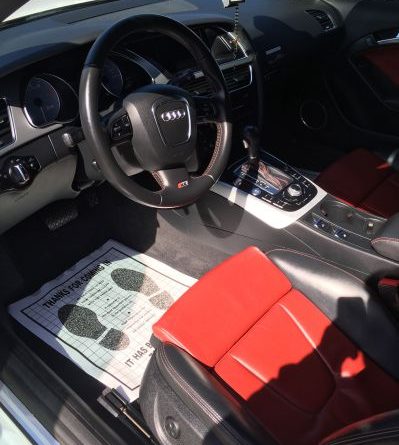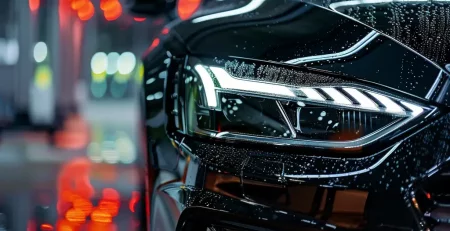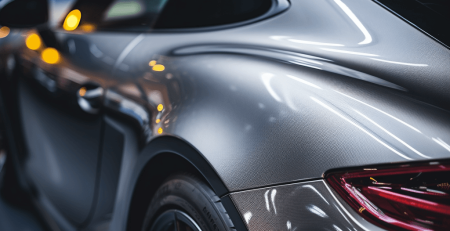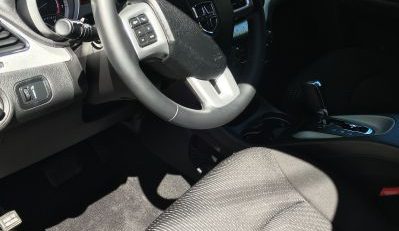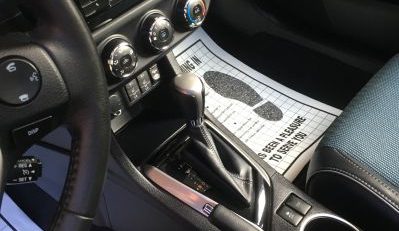How to Protect Your Car’s Paint from the Sun
Under the Scorching Sun
One hot summer day, I found myself standing in the baking parking lot of a beachside restaurant. There was a cruel irony in the beauty of the gleaming sun, as it seemed to be engaged in a personal vendetta against my beloved 1965 Mustang. As a car enthusiast and self-proclaimed historian, the sight of my car’s paint slowly succumbing to the sun was like a horror movie in slow motion.
Understanding Sun Damage on Car Paint
The science behind sun damage to car paint is both fascinating and terrifying. UV rays from the sun penetrate the paint’s surface, breaking down the chemical bonds and causing color fading. The damage is similar to the aging process in humans, wrinkles in the form of cracks and peeling, and discoloration akin to our sunspots. The signs of sun damage to car paint can be subtle at first, but over time, the harsh rays will take their toll, leaving your car looking significantly older than its years.
Preventive Measures Against Sun Damage
Preventing sun damage needs a proactive approach. Regular washing and drying can remove harmful contaminants that may amplify the sun’s damage. It’s like the basic hygiene for cars – the equivalent of washing your face, but with more soap and less moisturizer.
The next step is car waxing. Think of it as sunscreen for your car. It provides a layer of UV protection, preventing the sun’s rays from directly hitting the paint. It’s a car detailing necessity that many overlook, but trust me, your car will thank you for it.
Car covers and parking in the shade are the automotive equivalent of sitting under an umbrella at the beach. A quality car cover or a well-placed tree can provide a barrier against the sun, giving your paint some respite from the relentless UV rays.
Window deflector screens and UV protectants are like sunglasses and a hat for your car. These protect the interior surfaces from sun damage, while UV protectants act like a ceramic coating, providing an additional layer of protection for the paint.
Buying the Right Products for Sun Protection
Not all car waxes, car covers, or UV protectants are created equal. It’s crucial to choose products that are specifically designed for UV protection. Some car waxes come with UV inhibitors that increase their sun protection capabilities. A good quality car cover will be made of UV resistant material and fit your car well. UV protectants should be easy to apply and leave no residue.
For those considering a DIY approach, you might consider investing in a paint protection film (PPF). This thin layer of plastic acts as a physical barrier against the sun, much like a second skin. It’s a bit more labor-intensive to apply, but the added protection is worth it.
Tips for Applying Car Protection Products
It’s one thing to have the right products, but applying them properly is equally important. Car wax should be applied in a thin, even layer and buffed out to a shine. Car covers should be secured to prevent them from blowing away or scratching the paint. UV protectants can be applied with a cloth or sponge, ensuring complete coverage. If you’re applying a PPF, take your time and make sure there are no bubbles or wrinkles.
Remember, sun protection for your car is not a one-time affair. It’s an ongoing process, much like taking care of your skin. If you’re diligent, you can keep your car looking as good as the day you bought it – or in the case of my Mustang, as good as the day it rolled off the assembly line.
Professional Car Protection Services
Keeping your car looking its best often requires more than just regular washing. Professional car protection services can go a long way in maintaining your car’s aesthetic appeal.
When to Opt for Professional Services
Professional car protection services are essential when dealing with complex issues like deep scratches, rust, or sun damage. These services come in handy when you’re preparing your car for a sale, as they can significantly increase its market value. Also, opt for them if you lack the right tools or expertise to protect your car’s paint.
Selecting the Right Professional Service
Selecting the right professional service is crucial. Consider factors such as the company’s reputation, pricing, and range of services. Always request for before-and-after photos of their previous work. Moreover, check for reviews and ratings online to ensure they deliver quality results.
DIY Car Paint Protection: A Step-by-Step Guide
For car enthusiasts and those on a budget, DIY car paint protection can be a gratifying and cost-effective solution.
Prepping Your Car
Start by cleaning your car thoroughly. Use a clay bar to remove any contaminants that remain after washing. Afterward, use a polishing compound to smooth out minor scratches and blemishes.
Applying Car Wax
Apply a thin layer of car wax using a foam applicator. Work in small sections, using a circular motion to ensure an even application. Let the wax dry, then buff it off using a microfiber towel. Repeat the process until the entire car is waxed.
Using a UV Protectant
UV protectants shield your car’s paint from damaging sun rays. Like wax, apply the protectant in small sections, and remember to buff it off after it dries.
Restoring Sun-Damaged Car Paint
DIY Restoration
For mild sun damage, a DIY approach might suffice. Use a high-grit sandpaper to sand down the damaged areas, then apply a fresh coat of paint. Finish with a clear coat to protect the new paint.
Professional Restoration Services
For severe sun damage, professional restoration services are necessary. They have the right tools and skills to restore your car’s paint to its former glory.
Myths About Sun Damage to Car Paint
Many myths surround car paint sun damage. One popular myth is that red cars fade faster – this is untrue. The speed at which a car’s color fades depends on the quality of its paint and how well it’s maintained, not its color. Another myth is that washing your car in the sun can cause water spots – in reality, water spots are caused by minerals in the water, not the sun.
Frequently Asked Questions About Car Paint Protection
Common questions about car paint protection include:
- Is car paint protection worth it? Yes, it’s an investment that preserves your car’s aesthetic appeal and resale value.
- How often should I protect my car’s paint? It depends on the specific product you’re using. Generally, wax should be reapplied every three months, while sealants can last up to six months.
- Can I use household products to protect my car’s paint? No. Household products may damage your car’s paint. Always use products specifically designed for car paint protection.



